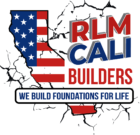Which Is Best for You
Repairing a building’s underlying structure is a complex endeavor that has developed its own jargon and methods over time. Particularly on the engineering side of things, things can get complicated fast because calculous is not a universal language. Given the specialized nature of the foundation repair industry, weighing the benefits and drawbacks of the various repair strategies can be challenging. To fix a foundation, for instance, do you prefer grade beams or steel pier systems?
Customers who are well-informed can make wise purchases, in our opinion.
In this article, we’ll compare and contrast grade beam foundation repair with steel pier system foundation repair so you can make an informed decision.
Different Pier Systems: Grade Beams, Push, and Helical
Fixing a Cracked Grade-Beam Foundation
Fixing foundation settlement with grade beams is a tried-and-true method. Strong beams of rebar-reinforced concrete are used to straddle caissons, distribute the home’s weight, or reroute the load away from a bearing wall. Grade beams, in a nutshell, do double duty as load bearers and redistributors.
For engineers, this is the default (the good ol’ “go-to”) choice since it became popular toward the end of the 20th century. Grade beams are excellent for creating a more even distribution of loads, but they do nothing to prevent foundation settlement. Furthermore, in today’s world of rapidly evolving technology, the drawbacks far outweigh the benefits.
An additional loss of stability can be caused by grade beams.
As a solid slab of concrete, grade beams are quite dense, with a density of 150 pounds per cubic foot. The grade beam may add significant weight, but it may also efficiently transfer the load between caissons or relieve stress on a load-bearing wall. Incompetent, non-load-bearing soil has already been identified as existing beneath the house (usually a porous clay, loam, or other expansive soil). The ship will sink even faster if you add more ballast.
Due to the shallow depths to which caissons are typically sunk, bedrock is rarely encountered. Therefore, grade beams put more strain on a “support system” that was already sagging under the load.
Beams used for grading can add up in cost.
When grade beams and cessions are factored in, the cost can add up quickly. To give just one example, the cost of caissons alone can be $10,000 per unit, not including labor or the grade beam.
Engineers often recommend grade beams, but why?
We analyzed the installation of grade beams to prevent foundation settlement and found that they are costly, disruptive, and ineffective. Then why do some structural engineers and repair businesses still advise a grade beam approach?
It’s a method that’s “been around the block a few times,” so to speak. In keeping with the old adage, “you can’t teach an old dog new tricks,” this is true. The fact of the matter is that other, superior options (like steel pier systems) in the spirit of value engineering exist.
Value engineering is a methodical strategy for matching optimal efficiency with the needs of a given project. With value engineering, you can use the cheapest materials and methods possible without sacrificing the quality of the project or repair.
Grade beams are inferior to steel pier systems.
Two types of piers are used, a push pier and a helical pier. The disadvantages of using a steel pier system to fix a foundation are minor and have been greatly reduced in recent years. Galvanized steel pipes, either in the form of push piers or helical piers, can be hydraulically driven to competent, load-bearing soil or bedrock. Put another way, they function like underground stilts, carrying the weight over the more stable ground.
Grade beams are more intrusive than steel pier systems.
In contrast to caissons, which call for deep trenches for installation, push piers and helical piers only necessitate 3×3 foot excavations. Steel pier foundation repair typically takes between one and two weeks and does not require the homeowner to vacate the property during the work.
Need a Second Opinion? Here at Inspect!
According to the information presented here, grade beams are not in keeping with the value engineering philosophy because they are intrusive, counterproductive, and costly. Furthermore, you discovered that steel pier systems are a significant improvement. Steel pier systems are effective in stopping foundation settlement, can be installed quickly, and cause little to no damage to surrounding landscaping or landscaping features.
If an engineer or foundation repair company has recommended grade beams instead of steel pier systems, you may have stumbled upon this article. We trust that this direct comparison will help you feel confident in your upcoming maintenance decision.
If you need a Foundation Inspection Big Bear Lake or repair, contact RLM Retrofit Foundation.










